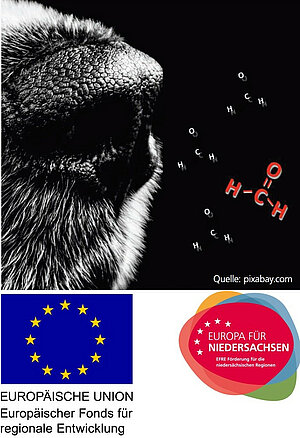
fiber optical sensor for detection of formaldehyde, innovative regional network in the south of Lower Saxony, Germany
Duration: September 2016 – August 2019
Co-funded by
Arbeitsgruppe Innovative Forschungsprojekte (AGIP), HAWK (Fakultät Naturwissenschaften und Technik), TU Clausthal (Institut für Energieforschung und Physikalische Technologien), Anwendungszentrum für Plasma und Photonik des Fraunhofer IST, Fraunhofer HHI (Abteilung: Faseroptische Sensorsysteme) Goslar, MIOPAS GmbH, FemtoFiberTec GmbH
Formaldehyde is everywhere
Formaldehyde is commonly used in many fields of daily life or industrial production. In chemical industry Formaldehyde is used for production of plywood, veneers, paints or textiles. Unfortunately Formaldehyde harms health and a permanent exposition of highly concentrations of Formaldehyde in air must be avoided.
Therefore, scientists of different institutes (Technische Universität Clausthal, HAWK – Hochschule für angewandte Wissenschaft und Kunst, Fraunhofer Institut IST- Anwendungszentrum für Plasma und Photonik, Fraunhofer HHI – Faseroptische Sensorsysteme) initiated together the innovative network SNIFF for development of a new sensor technology for mobile analysis and permanent monitoring of Formaldehyde concentrations in air. SNIFF is located in the south of Lower Saxony, Germany, and financially supported by European fonds of regional developments. The expertise and competencies of all partners are focused for development of a sensor in glass fibers, processed by laser technologies and, plasma based processes for surface modifications and deposition of plasmonic nano particles receptor layers. Systematic evaluation procedures, by meaning of chemo metric analysis, individually adapted for the sensors. Local companies are evolved during the project phase and are supposed for commercial activities, following SNIFF.